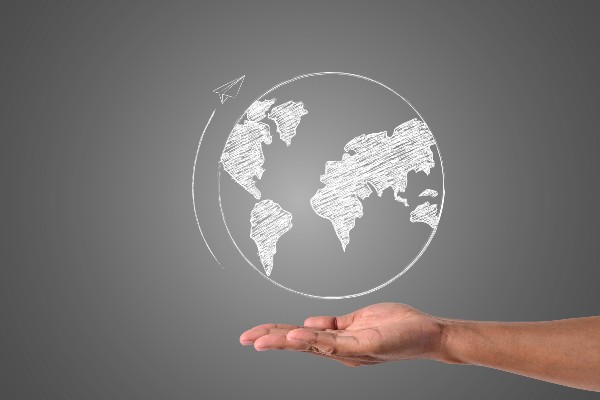Are you more of a listener? We’ve got you covered! Press play to listen to the article. ⬇️
What if someday people won’t have to assist the translation process anymore – but greatly advanced translation technology would, which means translation in the future could look a lot more different than now.
Meaning that technologies, like artificial intelligence, would gain such consciousness and knowledge that they would understand and communicate with people flawlessly. But does this mean that people will become redundant at tasks like translation?
A translation is also a text interpretation
As mentioned in the previous article, GPT-3 systems can be taught to perform certain text interpretation and writing.
GPT-3 operates similarly to machine translation, about which you can read more in this blog post.
In fact, translation automation by superior technologies has the ability to overcome human’s downsides and thus become prioritized over human beings.
Because of its advancement, many people fear they would eventually lose their job. We’ve also written about this struggle in this blog post.
But now we want to comfort you and broaden your horizons.
What are the true benefits of partially automated translation and how translation in the future look like?
GPT-3 has a high potential of creating a new reality, of which we shouldn’t be feared, neither too expectant.
Instead of fear, you should strive to recognize further implications and how it could make our lives simpler and your business efforts more effective. It could enable us to build a stronger and globally-understood communication like never before.
The only job left to be done is to return a reasonable and comprehensive text result in another language.


Boosted productivity causes cost-reduction and increases time-efficiency
Imagine if you were a translator and would have to translate the same text 23-times.
It seems legit, but would you find it amusing and will-friendly?
If translations were done faster, human workers could pay more attention to fine-tuning and localization efforts. Overall work would be definitely more cost-effective and pocket-friendlier.
Infinite learning capacity - the recipe for creating a localization guru?
We could say yes and no.
In fact, if you ‘feed’ a language-learning technology with data from a certain culture, then it will be familiar only with that language culture.
It’s like finding it ‘home’ and creating its ‘mother tongue’.
Therefore, it would be able to interpret or translate a certain text to the targeted language culture. It is much easier for translators to just check the final result of localization – and maybe even learn something new.
Why?
Because the technology behind it is always hungry for more data and can adapt to a certain way of thinking and communicating anytime.
At the same time, we should be precautious – because even machines can become biased.

Keeping up with our culture
It would be reckless for you to blindly believe in the future, where we are doomed by the advancement of AI technology like GPT-3. As long as it won’t reach the point of singularity and pure perfection, it still needs human-assisted supervision and final proofread.
But still, machines will have to keep up with the changing of human culture, right?
Only a human would be able to teach them about it. Therefore, we can’t become completely redundant.
If you are finally aware of all the benefits GPT-3 can offer, don’t hesitate to implement AI to your business strategy. Especially when it comes to translation.
Frequently asked questions
How does GPT-3 impact the translation industry?
Many fear that GPT-3 could put translators out of their jobs, but it’s safe to say that that’s an unnecessary fear. GPT-3 operates similarly to machine translation, meaning that it’s here to help translators deliver high-quality translations in a much shorter time frame.
What are the advantages of a partially automated translation?
Partially automated translation boosts the productivity of professional translators, as they can pay more attention to perfecting their translated texts. Overall the translation process becomes more cost- and time-effective.
Can GPT-3 help with localization?
Yes, GPT-3 can be a huge help in the localization process, but it’s still important to have a localization expert on board during the process. Although GPT-3 can deliver accurate content, it’s still unable to recognize cultural specifics of the target language.
Interested in reducing your translation costs
and applying more cost-effective option to your strategy?



